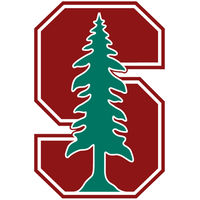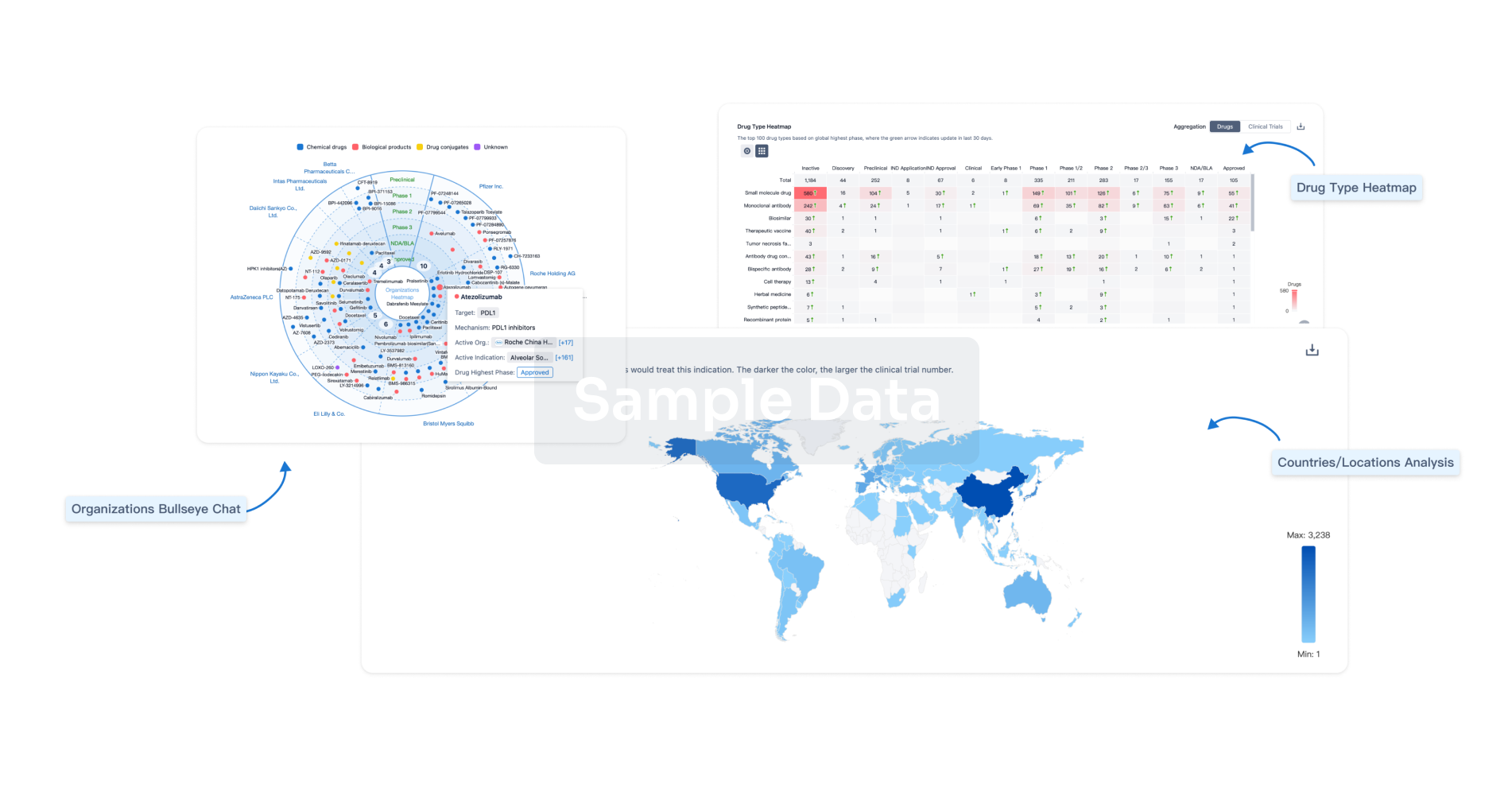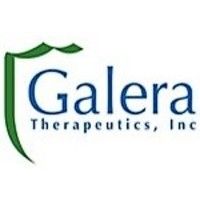Request Demo
Last update 08 May 2025
Otitis Media With Effusion
Last update 08 May 2025
Basic Info
Synonyms Ear Effusion, Middle, Ear Effusions, Middle, Effusion, Middle Ear + [69] |
Introduction Inflammation of the middle ear with a clear pale yellow-colored transudate. |
Related
4
Drugs associated with Otitis Media With EffusionTarget |
Mechanism Bacterial DNA gyrase inhibitors |
Active Org. |
Originator Org. |
Inactive Indication |
Drug Highest PhaseApproved |
First Approval Ctry. / Loc. Japan |
First Approval Date01 Jan 1987 |
Target |
Mechanism GR agonists |
Active Org. |
Originator Org. |
Active Indication |
Inactive Indication |
Drug Highest PhaseApproved |
First Approval Ctry. / Loc. United States |
First Approval Date04 Jan 1960 |
Target |
Mechanism SOD1 stimulants |
Active Org. |
Originator Org. |
Active Indication |
Drug Highest PhasePhase 3 |
First Approval Ctry. / Loc.- |
First Approval Date20 Jan 1800 |
123
Clinical Trials associated with Otitis Media With EffusionNCT06944795
A Short Wave Infrared Otoscope for Objective Middle Ear Effusion Diagnosis
The aim of this study is to provide preliminary data to support future studies to demonstrate that the short wave infrared (SWIR) otoscope is a better diagnostic tool than a white light otoscope for diagnosing middle ear infections (otitis media). Patients who are having a tympanostomy tube placement procedure will be participating in this study. Imaging will be performed with the white light otoscope and the SWIR otoscope to determine presence of absence of fluid. The SWIR otoscope will gather SWIR data and white light data simultaneously. As part of standard of care, patients who come in for this procedure have removal of middle ear fluid as part of their procedure, which will confirm presence or absence of fluid.
Start Date01 May 2025 |
Sponsor / Collaborator  Stanford University Stanford University [+1] |
NCT06674720
Correlation of Site and Size of Adenoid Hypertrophy and Middle Ear Effusion.
The aim of this study is to further investigate the correlation between Site and size of adenoid hypertrophy and middle ear effusion in order to provide evidence for designing a more standardized approach to the diagnosis and treatment of OME.
Start Date01 May 2025 |
Sponsor / Collaborator |
NCT06872983
Evaluation of the Use of Synthetic Glue for Mesh Fixation in Laparoscopic Sacrocolpopexy
The aim of the study is to evaluate the effect of cyanoacrylate adhesive in laparoscopic sacrocolpopexy, which is the gold standard treatment for apical prolapse. The procedure is predominantly performed using minimally invasive techniques, such as laparoscopic or robotic methods. However, the operative time for this procedure often exceeds 180 minutes due to its technical complexity. Although the experience level of the surgical team can lead to a decrease in operative time, there is a concerning increase in the risk of postoperative complications as the duration of surgery extends. One strategy to mitigate overall operative time is to reduce the fixation time of the implant to the vaginal wall.
Standard fixation involves using several sutures, but alternative fixation methods, including barbed sutures and cyanoacrylate adhesives, may demonstrate a reduction in fixation time. While there are only a few studies available on the use of cyanoacrylate adhesives for implant fixation, they generally indicate that this method is safe and can achieve an objective success rate of over 96% in resolving apical descent. However, the reported operative time using glue varies significantly across studies, ranging from 69 to 173 minutes.
The aim of the current study is to assess the impact of a synthetic cyanoacrylate-based tissue adhesive on various factors, including implant fixation time, overall length of surgery, short- and long-term postoperative complications, risk of prolapse recurrence, and the cost-effectiveness of this method in comparison to traditional laparoscopic sutures. This will be conducted as a randomized prospective monocentric study that includes patients aged 18 to 75 years diagnosed with pelvic organ descent grade 2 or higher. Notably, individuals requiring uterine preservation, having undergone previous hysterectomy, or with precancerous or malignant uterine diseases will be excluded.
The surgical approach will involve fixing the implant to the vaginal wall with cyanoacrylate adhesive in the target group, along with non-absorbable sutures. In contrast, the control group will follow traditional fixation methods using absorbable sutures in addition to non-absorbable ones. The study will evaluate outcomes using various questionnaires, including the POPQ for anatomical effect and PFDI-20 for subjective discomfort, while also assessing postoperative pain through the VAS scale.
Expected results include a targeted reduction in implant fixation time by at least 20 minutes and a comprehensive evaluation of the method's cost-effectiveness based on reports from Brno University Hospital. This study is significant as it represents the first prospective randomized trial to investigate the effects of cyanoacrylate adhesive on operative time and cost-effectiveness compared to conventional suturing in laparoscopic sacrocolpopexy
Standard fixation involves using several sutures, but alternative fixation methods, including barbed sutures and cyanoacrylate adhesives, may demonstrate a reduction in fixation time. While there are only a few studies available on the use of cyanoacrylate adhesives for implant fixation, they generally indicate that this method is safe and can achieve an objective success rate of over 96% in resolving apical descent. However, the reported operative time using glue varies significantly across studies, ranging from 69 to 173 minutes.
The aim of the current study is to assess the impact of a synthetic cyanoacrylate-based tissue adhesive on various factors, including implant fixation time, overall length of surgery, short- and long-term postoperative complications, risk of prolapse recurrence, and the cost-effectiveness of this method in comparison to traditional laparoscopic sutures. This will be conducted as a randomized prospective monocentric study that includes patients aged 18 to 75 years diagnosed with pelvic organ descent grade 2 or higher. Notably, individuals requiring uterine preservation, having undergone previous hysterectomy, or with precancerous or malignant uterine diseases will be excluded.
The surgical approach will involve fixing the implant to the vaginal wall with cyanoacrylate adhesive in the target group, along with non-absorbable sutures. In contrast, the control group will follow traditional fixation methods using absorbable sutures in addition to non-absorbable ones. The study will evaluate outcomes using various questionnaires, including the POPQ for anatomical effect and PFDI-20 for subjective discomfort, while also assessing postoperative pain through the VAS scale.
Expected results include a targeted reduction in implant fixation time by at least 20 minutes and a comprehensive evaluation of the method's cost-effectiveness based on reports from Brno University Hospital. This study is significant as it represents the first prospective randomized trial to investigate the effects of cyanoacrylate adhesive on operative time and cost-effectiveness compared to conventional suturing in laparoscopic sacrocolpopexy
Start Date11 Mar 2025 |
Sponsor / Collaborator- |
100 Clinical Results associated with Otitis Media With Effusion
Login to view more data
100 Translational Medicine associated with Otitis Media With Effusion
Login to view more data
0 Patents (Medical) associated with Otitis Media With Effusion
Login to view more data
6,237
Literatures (Medical) associated with Otitis Media With Effusion30 May 2025·Deutsches Arzteblatt international
Clinical Practice Guideline: The Treatment of Cleft Lip and Palate Deformities.
Review
Author: Lethaus, Bernd ; Sander, Anna Katharina ; Muche-Borowski, Cathleen
27 May 2025·Journal of the Royal Society of New Zealand
Audiology-led model provides efficient and effective access to grommet surgery
Article
Author: Hislop, Renee A. ; Wong, Jenna ; Pokorny, Michelle A. ; Mahadevan, Murali ; Johnston, James
27 May 2025·Journal of the Royal Society of New Zealand
A scoping review of ear and hearing health research in Aotearoa New Zealand: a focus on equity
Review
Author: Manuel, Alehandrea Raiha ; McCarthy, Hayley ; Thorne, Peter ; Holt, Elizabeth A-L ; Garland, Rebecca
10
News (Medical) associated with Otitis Media With Effusion07 Apr 2025
MONDAY, April 7, 2025 -- For patients with head and neck
cancer
(HNC), the incidence of radiotherapy-induced otitis media with effusion (RTOME) is associated with cancer type and radiation exposure to specific regions, according to a study published online March 29 in the
Ear, Nose & Throat Journal
.
Zhijin Han, from the Peking Union Medical College and Chinese Academy of Medical Sciences in Beijing, and colleagues conducted a retrospective analysis of 1,046 patients with HNC who underwent radiotherapy between 2016 and 2023. The incidence of RTOME was examined across cancer types, and radiation exposure probabilities of different head and neck regions were compared for patients with and without RTOME.
The researchers found that the overall incidence of RTOME was 5.83 percent in patients with HNC. There was significant variation in incidence by cancer type, with the highest rate for nasopharyngeal carcinoma, followed by ocular and orbital cancers, nasal cavity and paranasal sinus cancer, oral cavity and oropharyngeal cancers, laryngeal and hypopharyngeal cancers, and thyroid cancers (17.40, 6.25, 4.35, 4.32, 0.32, and 0 percent, respectively). Significantly higher radiation exposure frequencies were exhibited by patients with versus those without RTOME in five anatomic regions: the skull base and intracranial, parotid and periauricular, nasal cavity and paranasal sinuses, nasopharynx, and parapharyngeal space.
"These findings have important clinical implications for radiotherapy planning and patient management," the authors write.
Abstract/Full Text
Whatever your topic of interest,
subscribe to our newsletters
to get the best of Drugs.com in your inbox.
Radiation TherapyClinical Result
27 Jul 2023
FDA signage at its office in Maryland
iStock,
hapabapa
The FDA has three upcoming action dates in the next two weeks, including a highly anticipated decision regarding Biogen and Sage’s depression drug zuranolone.
Pictured: FDA sign in front of brown brick buildings/iStock,
hapabapa
The FDA has three decision deadlines over the next two weeks, including action dates for therapeutics targeting depression, graft-versus-host disease and a radiotherapy-induced side effect in patients with head and neck cancer.
Is Second Time the Charm for Mesoblast’s aGVHD Treatment?
The FDA has until
Aug. 2
to make a decision on
Mesoblast
’s BLA for remestemcel-L, being proposed for the treatment of steroid-refractory acute graft-versus-host disease (SR-aGVHD) in children.
Designed to be intravenously administered, remestemcel-L is an investigational immunomodulatory therapy that uses culture-expanded mesenchymal stromal cells obtained from the bone marrow of an unrelated donor. Remestemcel-L works by suppressing pro-inflammatory cytokines while simultaneously stimulating anti-inflammatory cytokines, in turn modulating the inflammation that gives rise to SR-aGVHD.
Mesoblast
first tried
to have remestemcel-L approved in May 2019, with a rolling BLA submission that included data from 309 children across three trials, demonstrating consistent treatment responses. Despite a
9–1 vote
in favor of the therapy, the FDA
rejected
the application in October 2020, requesting at least one more randomized controlled trial to validate the candidate’s efficacy.
In its resubmitted BLA, which the FDA
accepted in March 2023
, Mesoblast included new data, including long-term survival findings through at least four years and new outcome data for patients with high-risk disease activity. The regulator has granted the resubmission its Priority Review designation, while remestemcel-L had previously already won the FDA’s Fast Track designation.
Remestemcel-L is approved for SR-aGVHD in other countries, including
Canada and New Zealand
, where it is sold under the brand name Ryoncil.
Biogen, Sage Await FDA Verdict for Depression Drug
In one of the summer’s most
highly anticipated decisions
, the FDA will render its verdict on zuranolone, which
Biogen
and
Sage Therapeutics
’ are proposing for the treatment of major depressive disorder (MDD) and postpartum depression (PPD), on or before August 5.
The FDA
accepted
the NDA for zuranolone in February, and
did not choose
to convene at advisory committee for the application.
To back its regulatory bid, Biogen and Sage submitted data from the LANDSCAPE and NEST clinical development programs, as well as from a Phase II study in Japan.
LANDSCAPE comprises five studies: MDD-201B, MOUNTAIN, SHORELINE, WATERFALL and CORAL. In February 2022, the partners
released positive topline data
from CORAL, demonstrating that treatment with zuranolone induced a rapid and significant drop in depressive symptoms.
A couple of months earlier, in December 2021, Biogen and Sage
posted promising one-year follow-up data
from SHORELINE, showing that three-fourths of patients responded to an initial 14-day regimen, and of these, around 80% needed at most one additional dose of zuranolone over the course of a year.
For PPD, the companies ran the NEST program, which includes two studies dubbed ROBIN and SKYLARK. In June 2022, data from SKYLARK showed that zuranolone
met its primary and all secondary endpoints
, inducing significant improvements in symptom severity.
Zuranolone is a neuroactive steroid that works by positively modulating GABA-A receptors, which in turn helps to quickly rebalance dysregulated neural networks in people suffering from depression. The drug principally works on brain regions responsible for mood, behavior, cognition and arousal.
Galera Proposes Treatment for Radiotherapy-Induced Side Effect
The FDA will release its verdict on
Galera Therapeutics
’ NDA for avasopasem manganese by
Aug. 9
.
Galera is proposing avasopasem manganese for the treatment of severe oral mucositis (SOM) that arises in patients with head and neck cancer (HNC) as a side effect of radiotherapy. Currently, there are no approved treatments to reduce SOM in this patient population.
Avasopasem manganese previously won the FDA’s Breakthrough Therapy designation and its NDA, which the regulator accepted in February, was granted Priority Review.
Galera supported the candidate’s application with data from two randomized, double-blinded and placebo-controlled trials. In December 2021, the company
posted promising topline efficacy data
from the Phase III ROMAN study, in which avasopasem manganese met its primary endpoint, significantly reducing radiotherapy-induced SOM. Avasopasem manganese also led to a decrease in the severity of SOM in HNC patients undergoing radiotherapy.
The second study forming part of the NDA is a Phase IIb trial, which also showed improvements in SOM burden following avasopasem manganese treatment. The candidate’s safety pro both trials was consistent with those commonly observed with cisplatin chemo and radiotherapy, though higher rates of hypotension and nausea were reported.
Avasopasem manganese is a selective dismutase mimetic that works by converting superoxide into hydrogen peroxide, which in turn protects healthy cells while also sensitizing cancer cells to radiation.
Tristan Manalac is an independent science writer based in metro Manila, Philippines. He can be reached at
tristan@tristanmanalac.com
or
tristan.manalac@biospace.com
.
Clinical ResultPhase 2Priority ReviewDrug ApprovalFast Track
28 Mar 2023
Pictured: Cancer researcher looking through a micr
Monopar Therapeutics is dropping its lead candidate, Validive, after it failed to meet efficacy markers in Phase IIb/III trials for severe oral mucositis.
Pictured: Researcher looking through a microscope/Getty Images
Monopar Therapeutics
is dropping its lead candidate, Validive, being studied in a Phase III trial to treat severe oral mucositis (SOM) in oropharyngeal cancer patients undergoing chemoradiotherapy.
According to Monday’s press release, the decision came after the candidate failed to meet efficacy markers in Phase IIb/III trials.
An analysis conducted by an independent monitor found Validive didn’t meet the pre-determined 15% threshold in SOM prevention between the drug and the placebo. The results didn’t include any safety concerns.
This is an indication for which there is currently no FDA-approved preventative or treatment.
SOM, a condition associated with some cancer treatments, affects the quality of life for patients undergoing radiation therapy to the head and neck, chemotherapy, chemoradiotherapy or hematopoeitic stem cell transplantation. SOM can be debilitating; it’s characterized by erythema, edema and ulcerations of the oral mucus membranes.
“While we are disappointed with the outcome of this study, we are now focused on re-deploying the financial and human resources previously dedicated to Validive to advance our Phase 1b camsirubicin clinical trial and our MNPR-101 radiopharmaceutical program partnered with NorthStar Medical Radioisotopes,” said Chandler Robinson, M.D., CEO of Monopar, in a statement.
He also noted Monopar has sufficient funds to support its planned activities beyond the first quarter of 2024.
In addition to Validive, Monopar’s
pipeline
includes drug candidates that target other types of cancers, including soft tissue sarcoma and solid tumors. The company’s drug development efforts are focused on using precision medicine to identify and target specific molecular pathways that drive cancer growth and progression.
Current Pipeline
Even as the Validive trial closes, Monopar has several other candidates in the works:
Camsirubicin
(Phase Ib), for the treatment of advanced soft tissue sarcoma
MNPR-101 RIT
, a late-stage preclinical antibody for radiopharmaceutical use in advanced cancers
MNPR-101ZR
, a late-stage preclinical imaging agent for radioimmunotherapy
MNPR-202
, an early-stage camsirubicin analog, for various cancers
Monopar stock
fell nearly 50%
in pre-market trading Tuesday.
Phase 3ImmunotherapyPhase 1Clinical Result
Analysis
Perform a panoramic analysis of this field.
login
or

AI Agents Built for Biopharma Breakthroughs
Accelerate discovery. Empower decisions. Transform outcomes.
Get started for free today!
Accelerate Strategic R&D decision making with Synapse, PatSnap’s AI-powered Connected Innovation Intelligence Platform Built for Life Sciences Professionals.
Start your data trial now!
Synapse data is also accessible to external entities via APIs or data packages. Empower better decisions with the latest in pharmaceutical intelligence.
Bio
Bio Sequences Search & Analysis
Sign up for free
Chemical
Chemical Structures Search & Analysis
Sign up for free



